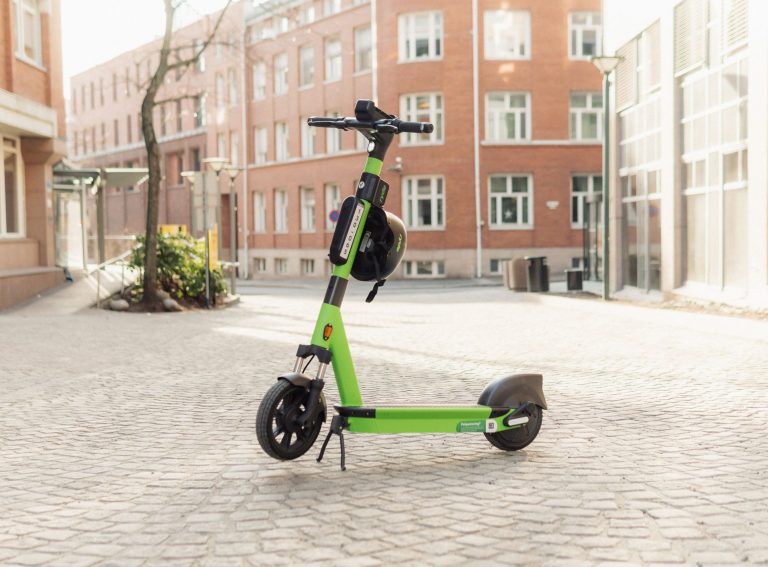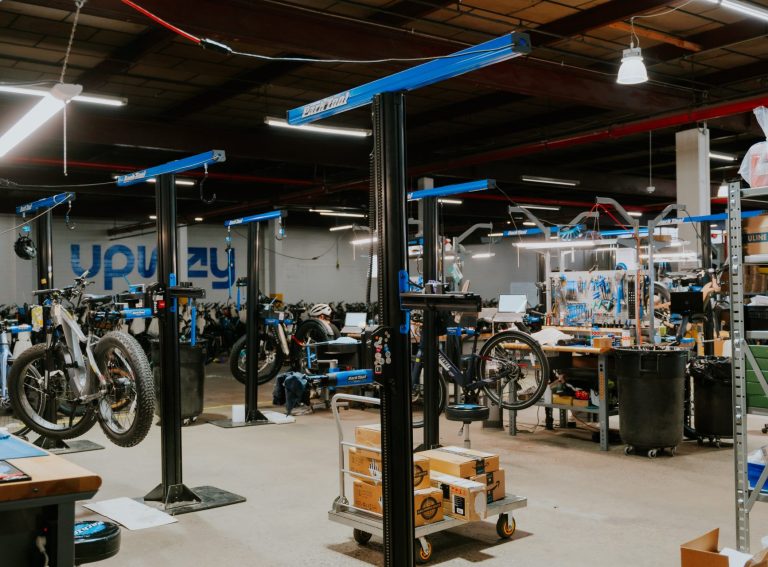In the summer of 2012, while the world was watching the London Olympics, Beryl founder Emily Brooke had an epiphany.
She had just finished university, and was at a prestigious entrepreneurs accelerator in London, where she was supposed to be ‘building the next Google’.
However, she couldn’t take her mind off her own invention – one that would transform major bike share schemes, improve cyclist safety and form the beginnings of a company that would become a significant player in the world of micromobility – and earn her an MBE along the way.
The final catalyst to fully turn her attention to what would become the Blaze Laserlight, a safety light that projects a green outline of a bicycle 6-7m on the road in front, came late one night that summer.
Brooke stepped out of a coding class in central London to find her bicycle had been stolen.
This “completely irrationally broke my heart”, she once told me, because it was the bike on which she fell in love with cycling.
Later that night came the horrific news that 28-year-old Dan Harris had been killed by a bus that turned across his path as he cycled through the Olympic Park – the very collision her invention was designed to prevent.
Brooke said: “I had a literal slap in the face, like ‘What are you doing? This is what you care about, this is what you should be doing’.”
“I called my mum about midnight, said ‘mum, I’m really sorry but I have to do Blaze, I can’t do anything else’.
She recalls her mum’s response: “We know, we were just waiting for you to figure it out.”
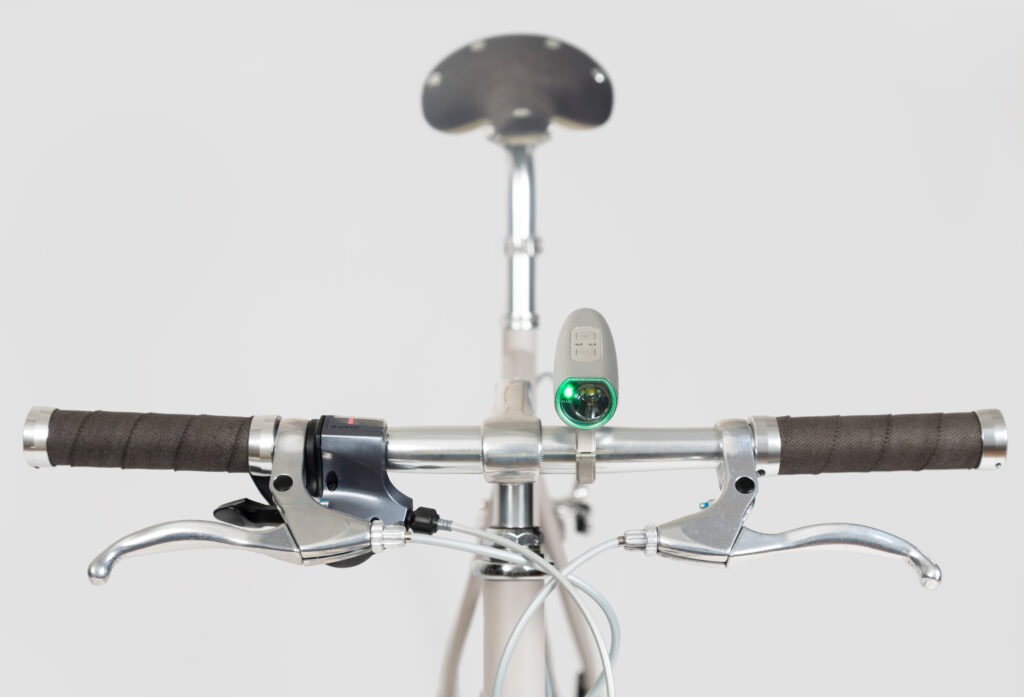
“Our purpose from day one was build a better world, by getting more people in cities on bikes…”
Brooke invented the Blaze Laserlight after a summer spent cycling from Land’s End to John O’Groats with a friend – on the same bike she’d lost to thieves.
It was a genuine innovation with very real safety benefits, of the kind that would help reduce the kind of tragic incidents that killed Harris.
By 2013 the Laserlight was being shipped to 60 countries around the world, and in 2015 it was rolled out across London’s cycle hire scheme.
It now also features on Montreal’s city cycle share scheme, as well as in Edinburgh, Glasgow and the West Midlands too.
Then, in 2017, Brooke was awarded an MBE for services to the economy and transport – something people with decades in the industry can only dream of – in honour of a product that could demonstrably help save lives, and one that was making a splash internationally.
Blaze was renamed Beryl in 2018, to coincide with the launch of its first two dockless bike share schemes, and e-scooters followed in 2020. In a very new industry, Beryl is now arguably one of the elders.
It might seem like a leap from their original consumer product to running micromobility systems, but for Brooke it all fits with a founding vision.
“Our purpose from day one, and I had it written up on my wall at university, was ‘build a better world, by getting more people in cities on bikes’,” she told Zag.
“I don’t need to tell you why that’s a good thing: good for the individual and good for the city as well, and that purpose has really driven us all the way through.
While that mantra expanded to become “more people in cities moving sustainably”, she said, “everything we’ve done has been to that end.”
In many ways, Emily has forged her own path from a young age – something she thanks her parents for – they had always told her, “do whatever makes you happy”.
Her parents left school straight into work, and became business people; her mother was a model turned cigarette girl at night clubs who went on to run a successful property business and publishing business.
At her all-girls school Brooke enjoyed woodwork, but was funnelled into a course of intense A-level study in which there was little time for anything else.
A teacher encouraged her to pursue physics at uni, and though her initial response was “you’ve got to be joking”, she took the advice.
“I applied to six universities, five doing astrophysics; that was slightly more interesting than straight physics, and then Oxford, who only do just straight physics. I got my letter of acceptance [to Oxford] after my interview, and thought: ‘now I’ve got to go’”.
While physics at school was “physical things, things you can get your head around,” “at university, it was just very high-level maths, and purely theoretical and intangible.”
“I lasted a year.”
Brooke then spent a year studying art, developing a portfolio before heading to Brighton University to study product design.
“I went from one extreme to the other,” she said.
“I could do the science and maths at school. And then I loved the art, and the creativity, but it’s the combination of the two, which is the product design, which I loved, which is much more solving real-world problems.”
Prove to me there’s a problem
That taught her “everything else around designing a product, so life cycle analysis, manufacturing, marketing, branding, and all of those other elements”.
“Which is, it turns out, actually, what I’ve ended up doing as a career. What I found really interesting is solving problems and using that part of your brain, and also the creativity.”
After being on the bike all summer, falling in love with cycling, she knew she wanted to go back and spend the final year solving the biggest problem for cycling, which was safety.
The solution she initially came up with was brake lights for bicycles. Her course leader’s response was “I don’t believe you’re tackling an actual problem”.
It was then Brooke learned one of her most valuable lessons.
“He said go away and prove to me there’s a problem,” she said.
She set off on what she calls a “statistical deep dive” for six months, looking at collision data, road safety reports, and speaking to a driving psychologist.
She realised: “The problem isn’t behind you, the problem is in front of you… 79 % of cyclists are going straight ahead (when they are hit), and the two most common threats are ones you can see in front of you, but they can’t see you.”
She realised, cycling around town, that if she could “project” onto the road ahead of herself, truck drivers were less likely to swing across her path, having not seen her.
It was a eureka moment, and the Laserlight was born.
After “three weeks of literal blood, sweat and tears”, with input from a laser expert, she built a “really ugly” but functional prototype.
More than the physics and design background, the success was “because I could go to experts and ask for their help.”
“I spoke their language… having a bit of a problem-solving mind.”
She said: “I’ve got to this point today by asking as many questions as you possibly can, from people who know a lot more about what you’re doing than you do.”
This kind of ‘design thinking’ also formed a pattern for Brookes, and for Beryl. The year after leaving university, she founded the company.
She laughs, saying: “I spent quite a frustrating year or so having every friend that I had in London saying ‘Oh Em, I was thinking about you the other day, do you know what should do? You should get your laser things on the Boris Bikes’ [London cycle hire scheme]”.
Her response: “Yeah, great idea. We’d love to, but … ‘as if’”.
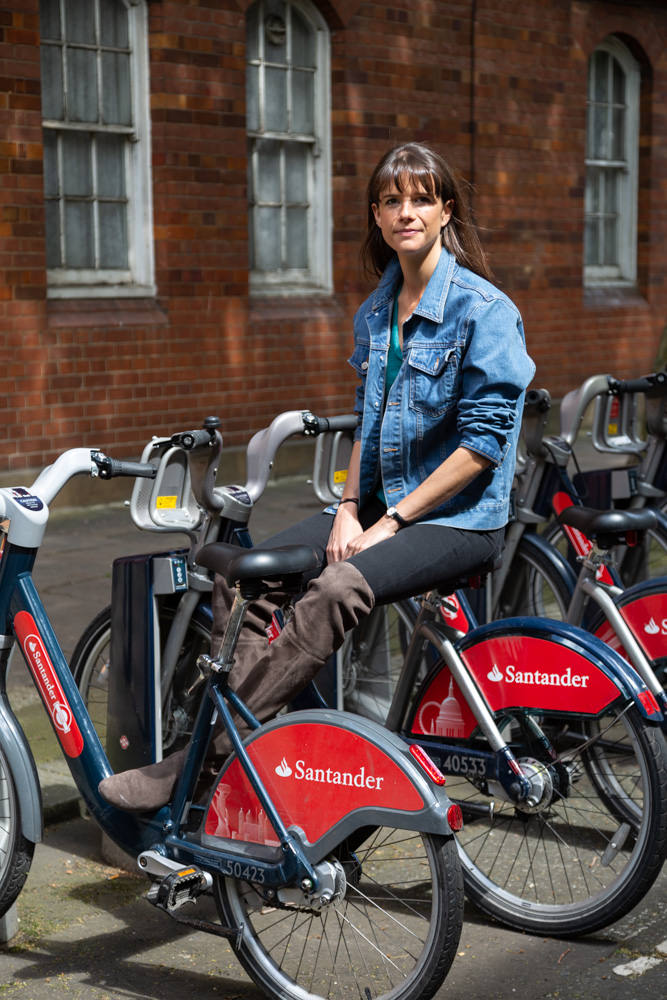
However, after meetings with Transport for London (TfL) and Serco, came a “very lengthy process”, in which the laser light was independently tested at the Transport Research Laboratory (TRL).
It was a nerve-wracking time for Brooke, who couldn’t be involved in the process, but the results were better than she could have hoped.
The 92-page report found a rider with a Laserlight at night was more visible than one without in daylight, reducing drivers’ blind spots, which can be lethal for cyclists.
After that it was rolled out to the entire London cycle hire fleet, currently 12,500 cycles.
Beryl is now an old hand at bike-share and even helped design the most recent model of London cycle hire bikes.
“It seems kind of a big leap to micromobility and doing our entire full micromobility fleets ourselves from just doing bike lights, but that was the journey”, she said, adding working with the London scheme, “which arguably is one of the best run and operated micromobility schemes in the world,” taught them a lot.
Over time, Brooke explains, they developed and delivered more technology, starting with the laser lights, and GPS, then Bluetooth sensor and connectivity, the Internet of Things (IoT) on the bike – “basically all the technology onboard the bike”.
Brooke and her team realised the infrastructure, the physical docks, were a significant part of the schemes’ costs, and saw the potential for a different way.
And they had done the hard part – the technology – building a bike was straightforward by comparison, something they’ve developed over the last two years.
“We had a good network in the cycling industry and access to some very good bike designers and our own internal design team,” she said.
“Quite naughtily, we poached the general manager of the London bike share scheme who actually operated the London bike share scheme that we’d been working with. He now runs our operations.”
There were a couple of moments along the way. “We were developing it and designing it before the Ofos and Mobikes of the world turned up in the UK,” she said.
“That was quite a hairy period of watching that wave of dockless bike share sweep through the UK and beyond. We had to kind of hold tight, hold on, stick to our guns and what we believed, a better way of doing things and building that out.”
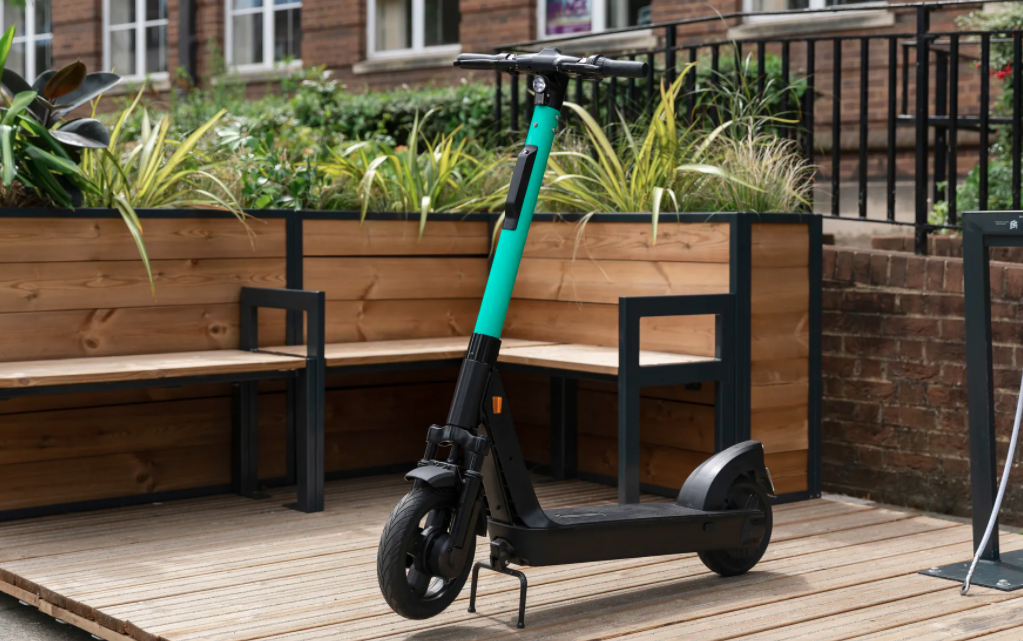
From there it wasn’t such a big leap to e-scooters, and Brooke believes they are arriving at a good time, “benefiting from two years of innovation and iteration on scooter design”, using an off-the-shelf model her team refers to as “the Range Rover of scooters – it’s pretty sturdy”, with their own IoT technology, of course.
The tech is “an area that can definitely be improved,” said Brooke, with geofenced bay parking an important element – something they’ve built in “from day one”.
Users can pay a £2 premium to leave vehicles outside of bays, which gives a 94% compliance rate across all schemes.
“I think for a transport system to really benefit the whole population, and not just those who are jumping on a vehicle for the fun of it, you do have to put in some sort of rules,” she said.
“Pavement space is already at a premium, and having accurate, geo-fenced parking locations, does make the system work for everybody – and not just the users who for convenience want to drop it outside the coffee shop.”
“I think of [e-scooters] as almost like a gateway drug in micromobility,” she says. “Somebody jumps on a scooter for the first time because it’s fun.”
After that, they may want to go further or carry a bag, and might try out a bike or ebike.
For this reason, she says, a range of options is important, not least because the e-scooters, that bring in more revenue, help subsidise the bikes and ebikes, which is where Brooke’s heart still lays.
Brooke said: “There’s no doubt that the bike, the good old-fashioned bike, it has the greatest benefit for social good of any other mode of transport just because it’s more efficient and cheaper and better for the health of the individual and sustainable for the people around you.”
The next step, she believes, is more and better infrastructure, “making it safe for everybody no matter what vehicle you’re on”.
That also means treating users fairly.
While the e-scooter trials are still in their infancy, she believes in one set of rules for all riders no matter what vehicle they are on.
Brooke doesn’t believe in speed limiting zones, for example, have been done well, and it’s not something Beryl subscribes to with its scooters.
She worries about suddenly decreasing a rider’s speed at a junction, for example – which may cause more safety problems than it solves.
“It’s not a one size fits all and every city is completely different,” she said.
“And they’ve got their own challenges, they’ve got their own topography, they’ve got their own different demographics.
“This one size fits all approach, I think we’ve seen that hasn’t worked; these very large companies with just one vehicle type, and one way of doing things just turning up and dumping them on the street and hoping it works.
“I think we’ll learn an awful lot over the next 12 months, but then we’ll also need to learn to tailor offerings and services to different cities.”
She believes because Beryl’s bikes are “being built in house and from scratch, by ourselves, we can we can tailor things to cities”.
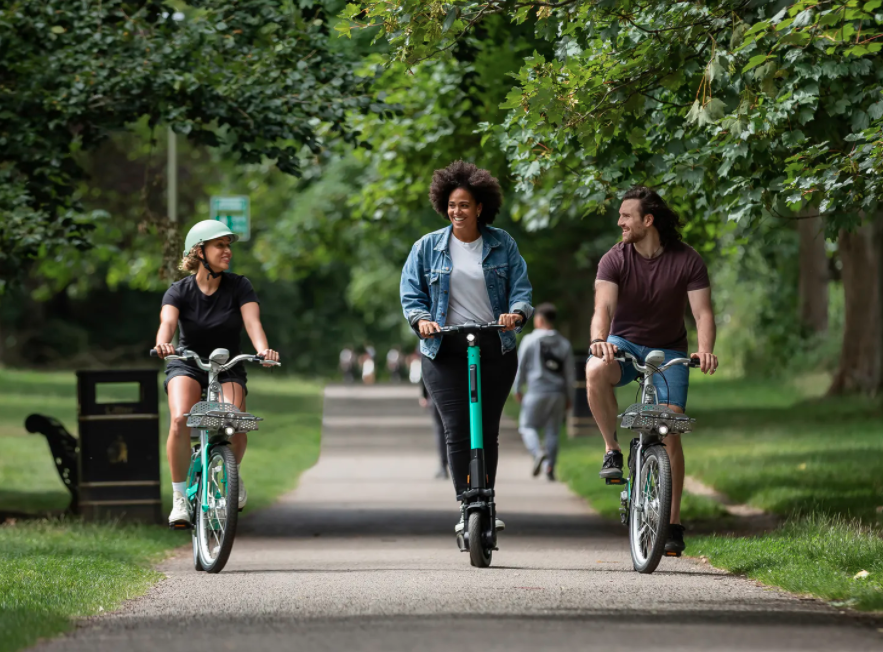
In September Beryl’s e-scooters arrived in Norwich, on a year-long trial, becoming the UK’s first micromobility provider to offer three vehicle types across one city, along with regular dockless hire cycles and ebikes.
Beryl scooters also operate on the Isle of Wight, with users clocking up more than 7,000km on 50 scooters in the first two weeks alone.
Now Beryl has 3,440-odd bikes on streets, which in 2020 alone recorded 2 million kilometres of journeys on its fleet of cycles across UK cities from Bournemouth to Watford, Norwich to Hereford, Christchurch and Poole – across more than half a million trips.
They also reported a surge in female riders, with half of its ridership female.
The company expanded its e-scooter offering to Bournemouth and Poole at the end of January with 25 scooters, in a trial running to the end of November.
There will be 250 marked parking bays across the area for pick up and drop off, with potential expansion into Christchurch, as the scheme progresses.
In a very new market, Emily’s patience, her evidence-led approach and commitment to innovation have created one of the field’s enduring brands.
Beryl’s and Brooke’s star continues to ascend, and shows no signs of slowing.



